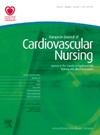Physical and mental components after cardiac rehabilitation intervention: a systematic review and meta-analysis
IF 3.9
3区 医学
Q2 CARDIAC & CARDIOVASCULAR SYSTEMS
引用次数: 0
Abstract
Background Cardiovascular disease is a major public health problem associated with high mortality and morbidity, reduced exercise capacity, and Health-related quality of life (HRQol). Interventions in Cardiac Rehabilitation (CR) programmes have gained ground in optimising these indicators, using patient-reported outcome measures (PROMs) to assess the HRQol of patients participating in these programmes, allowing them to show their state of health and make more informed clinical decisions. Purpose To analyse, using PROMs, the effect of CR programmes on the HRQoL of patients after a cardiac event, depending on the time of assessment. Methods The search was carried out in the MEDLINE, CINAHL, CENTRAL and Web of Science databases after registering the protocol in PROSPERO. We included all randomized controlled trials (RCTs) that compared interventions in CR programmes with usual care after a cardiac event and that used PROMs to assess HRQoL over time. The risk of bias was assessed using the Cochrane tool (RoB2) and the quality of evidence using the GRADE system. A meta-analysis was carried out with studies that assessed HRQoL in patients with coronary pathology using the SF-12 PROM at 6 months after a CR programme. Results 17 studies with 4,993 patients participating in CR programmes were included. The PROMs used in these studies to assess HRQoL were SF-12 (n=7), SF-36 (n=2), EQ5D (n=5), KCCQ (n=3), MacNewHRQL (n=3) and HeartQol (n=1). In the 3 RCTs of the meta-analysis, and after applying the SF-12 PROM at 6 months after a CR programme in patients with coronary pathology, the effect of participation was positive on HRQoL only in the physical component (MD 7.02; 95%CI [0.41,13.62]; p=0.04). The results of our meta-analysis indicate a moderate overall quality of evidence, using the GRADE approach, when assessing HRQoL at 6 and 12 month after intervention in a CR program. Conclusions This study develops knowledge on CR by showing the different PROMs applied after a programme, demonstrating a positive effect of CR on HRQoL after evaluation by the same PROM. The importance of time for assessing HRQoL was demonstrated by applying the SF-12 after the CR programme in patients with coronary pathology, with statistically significant results in the physical domain at 6 months. Given the importance of these results in improving HRQoL, it will be important for healthcare organisations to implement PROMs, investing more time and resources in a utilisation strategy.心脏康复干预后的生理和心理因素:系统回顾和荟萃分析
背景心血管疾病是一个重大的公共卫生问题,与高死亡率和发病率、运动能力下降以及与健康相关的生活质量(HRQol)有关。心脏康复(CR)项目中的干预措施在优化这些指标方面取得了进展,利用患者报告的结果测量(PROMs)来评估参与这些项目的患者的 HRQol,使他们能够显示自己的健康状况并做出更明智的临床决策。目的 根据评估时间的不同,使用 PROMs 分析 CR 项目对心脏事件后患者 HRQoL 的影响。方法 在 PROSPERO 中注册方案后,在 MEDLINE、CINAHL、CENTRAL 和 Web of Science 数据库中进行检索。我们纳入了所有随机对照试验(RCT),这些试验比较了心脏事件后 CR 计划中的干预措施与常规护理,并使用 PROMs 评估了一段时间内的 HRQoL。我们使用 Cochrane 工具 (RoB2) 对偏倚风险进行了评估,并使用 GRADE 系统对证据质量进行了评估。对使用 SF-12 PROM 评估冠状动脉病变患者在 CR 项目结束后 6 个月的 HRQoL 的研究进行了荟萃分析。结果 共纳入了 17 项研究,4993 名患者参与了 CR 项目。这些研究中用于评估 HRQoL 的 PROMs 包括 SF-12(7 项)、SF-36(2 项)、EQ5D(5 项)、KCCQ(3 项)、MacNewHRQL(3 项)和 HeartQol(1 项)。在荟萃分析的 3 项研究中,冠心病患者在接受 CR 计划 6 个月后采用 SF-12 PROM,参与对 HRQoL 的影响仅体现在身体方面(MD 7.02;95%CI [0.41,13.62];P=0.04)。我们的荟萃分析结果表明,采用 GRADE 方法评估 CR 项目干预后 6 个月和 12 个月的 HRQoL 时,证据的总体质量为中等。结论 本研究通过展示一项计划后采用的不同 PROM,证明了 CR 在通过相同的 PROM 进行评估后对 HRQoL 的积极影响,从而增进了对 CR 的了解。在冠状动脉病变患者实施 CR 计划后,通过使用 SF-12 结果表明了时间对于评估 HRQoL 的重要性。鉴于这些结果在改善 HRQoL 方面的重要性,医疗机构必须实施 PROM,并在使用策略方面投入更多的时间和资源。
本文章由计算机程序翻译,如有差异,请以英文原文为准。
求助全文
约1分钟内获得全文
求助全文
来源期刊

European Journal of Cardiovascular Nursing
CARDIAC & CARDIOVASCULAR SYSTEMS-NURSING
CiteScore
5.10
自引率
10.30%
发文量
247
审稿时长
6-12 weeks
期刊介绍:
The peer-reviewed journal of the European Society of Cardiology’s Council on Cardiovascular Nursing and Allied Professions (CCNAP) covering the broad field of cardiovascular nursing including chronic and acute care, cardiac rehabilitation, primary and secondary prevention, heart failure, acute coronary syndromes, interventional cardiology, cardiac care, and vascular nursing.
 求助内容:
求助内容: 应助结果提醒方式:
应助结果提醒方式:


